What Assistance is Available to You?
Arrival and departure assistance services are provided by the ground services teams at the respective airports. It is important that you familiarise yourself with the type of assistance that is offered, so that you ensure you inform of your needs in advance of your travel dates. Making arrangements on the day may be challenging so always contact our call centre.
Assistance that is available to you includes:
- Getting through the airport formalities such as immigration, security & customers to your boarding gate or arrivals pick up area.
- Getting on and off the aircraft.
- Retrieving your luggage and mobility aids.
- Assisting with bags when you are boarding and disembarking.
Let Us Know What You Need
Please let us know as soon as possible ahead of your flight what special assistance you require. You can request this at the time of booking either by selecting one of the options on the website booking page or by contacting our Call Centre after your booking.
You must ensure you let us know at least 48 hours before the scheduled time of departure of your flight. You may request via email, ensuring you give us 7 days notice.
For further information contact our Call Centre.
Choosing A Seat
Due to safety regulations, we are required to have restrictions that apply to seats next to or near to emergency exits and exits.
Passengers are not permitted to sit in those seats if they are:
- an adult with an infant
- pregnant
- under 16 years of age
- deaf or blind
- mobility impaired
- requiring a seat belt extension
Expectant mothers
Travelling while pregnant can be a little daunting. To ensure your comfort and safety, this is what you need to know.
Single pregnancy
You can fly with us up to the end of your 35th week of pregnancy, including your return flight – provided you are expecting only one baby. We do recommend that you consult your doctor before flying.
Multiple pregnancy
If you are expecting more than one baby, you may fly with us return up to your 32nd week of pregnancy. We do recommend that you consult your doctor before flying.
Are you fit to fly?
If you are over 28 weeks pregnant, we require a certificate from your doctor confirming that you are able to fly and what your stage of pregnancy is. We will accept certificates issued by midwives.
If you are unable to provide the required documentation you will not be allowed to board.
Travelling with an Escort or Companian
You may need to travel with a Companion (someone at least 16 years old, and physically able to help you in an emergency) for your own safety and that of fellow customers if you are unable to do any of the following things:
- Understand the safety briefing.
- Fasten and unfasten your seat belt.
- Take out and put on your life jacket.
- Leave your seat and get to an emergency exit.
- Put on an oxygen mask.
- Use the toilet on your own.
Learning or cognitive disability
If you have a developmental, learning or cognitive disability we advise that you arrange a travel companion to assist you throughout your journey. This is essential if you are unable to understand or react to safety instructions or requests from the crew.
For further information contact our Call Centre or read our Terms and Conditions.
Deaf or Hearing impaired
We will assist you throughout your journey. From checking in at the airport to disembarking the plane, reacquiring your bags at the baggage claim and passing through immigration, we will ensure that you continuously receive assistance.
Our cabin crew will take you through a safety briefing. All have been trained to communicate with hearing-impaired customers and some may be able to communicate in sign language.
For further information contact our Call Centre.
Blind or Sight Impaired
We will assist you throughout your journey. From checking in at the airport to disembarking the plane, reacquiring your bags at the baggage claim and passing through immigration, we will ensure that you continuously receive assistance.
Our cabin crew will take you through a safety briefing, helping you to locate the oxygen mask, life jacket, use your seat belt and explaining to you where your seat is in relation to the exits and toilet.
For further information contact our Call Centre.
Travelling with an assistance dog
If you would like to travel with a registered assistance dog, you may do so at no extra cost. There are some conditions and requirements that must be adhered to. Here’s what you need to know.
What is an assistance dog?
This is a dog specifically trained to do more than one task to mitigate the effects of an individual’s disability.
A guide dog guides individuals who are blind or visually impaired. The presence of a dog for protection, personal defence, or comfort does not qualify that dog as a guide dog.
A hearing dog alerts individuals who are deaf or hard of hearing to specific sounds.
A service dog works for individuals with disabilities other than blindness or deafness. They are trained to perform a wide variety of tasks including but not limited to pulling a wheelchair, bracing, retrieving, alerting to a medical crisis, and providing assistance in a medical crisis. Service dogs can include a seizure alert dog as a diabetes alert dog.
Assistance dogs must be certified by an organisation that is a full member of Assistance Dogs International (ADI) or International Guide Dog Federation (IGDF), the accrediting bodies for assistance dog organisations worldwide.
Important information
Assistance dogs can only be carried on domestic flights. Only one assistance dog will be carried per flight. There are exceptions for couples where two assistance dogs may be accepted for travel on the same flight.
The dog must wear a standard identifying jacket or harness.
Carriage is on a first come basis, so please inform the fastjet Call Centre at time of booking of your request to travel with your assistance dog.
We also require that you submit a medical letter or certificate to confirm the requirement for the assistance dog at the time of booking. Bring this letter/certificate with you on your travels.
We also need an official document confirming that the dog is a fully trained assistance dog. This document must be presented at the check-in counter, and at any other time when security or airport staff may request this.
We are unable to accept liability for any assistance dogs which do not have the correct documentation. If you are flying with your guide dog, please check in for the flight at least 2 hours before take-off.
Emotional support animals
Due to aircraft configuration, fastjet does not allow pets or any other animal that may provide emotional support on board our aircraft. We do however allow guide dogs on board domestic flights.
Passengers with Reduced Mobility
We do not require medical clearance from your doctor to confirm travel with fastjet if your sole condition is one of reduced mobility.
We ask that you report to the fastjet check-in counters at least ninety (90) minutes prior to departure to ensure that we assist you first.
Important information
Due to safety regulations, the total number of passengers with reduced mobility that can be carried on a flight cannot exceed the number of able-bodied passengers. Therefore, fastjet reserves the right to restrict the number of customers with reduced mobility. It is important for this reason that you inform us at the booking stage of your requirement.
For further information contact our Call Centre.
Assistance Offered
We offer assistance as follows:
For persons that cannot walk long distances; (WCHR): You can ascend or descend the aircraft steps and can make your own way to and from your seat, but require a wheelchair to and from the aircraft across the tarmac. A Passenger Aid Unit is not essential to board this type of wheelchair passenger. The ground services team will assist you through the airport, taking you to and from the aircraft. You then make your own way in and out of the aircraft, including walking up and down the aircraft steps.
For persons that cannot walk up and down stairs/steps; (WCHS): You cannot ascend or descend steps but are able to make your own way to and from the seat. The ground services team will assist you through the airport, as well as arrange for you to be carried on and off the aircraft. You then make your way to your own seat.
For persons that are immobile; (WCHC): You are completely immobile and require assistance going up and down steps and getting to and from your seat. You will need to be accompanied by an able-bodied person (travel companion) over the age of 16 years. Full assistance is offered through the airport, on and off the aircraft and in the cabin to and from your seat. Approval to travel shall be required before your ticket is paid for.
Travelling with a Wheelchair
You can travel with a personal wheelchair or pre-arrange wheelchair assistance at the airport.
Contact the fastjet Call Centre for more information.
We permit up to two items of mobility equipment free of charge, provided one is a wheelchair and the other a small mobile aid unit such as a walking stick.
We permit the carriage of powered wheelchairs. However, we are limited to accept items that will fit through the cargo doors of the aircraft. We recommend you take any loose iteams, such as removable foot pedals or cushions with you in your Cabin Baggage.
No wheelchair/powered mobility unit will be accepted for carriage unless the power source is disconnected, terminals insulated, and wiring is properly stowed.
If you are travelling with a wheelchair, you must advise fastjet of this at the time of booking and ensure it does not exceed 32 kg. You can do so through our Call Centre or at a fastjet travel Shop.
fastjet reserves the right to refuse carriage of a mobility aid if any of the conditions are not met.
Electric Wheelchairs and Mobility Aids
Heavy powered wheelchairs and electronic mobility aids that require special handling may have to be handed to our ground staff at check in. This may vary from airport to airport. In such cases we will provide assistance getting you to and from the aircraft.
At the point of booking, you will need to let us know about your powered wheelchair or electric mobility aid. For safety reasons we need to know the following information:
- type of battery
- number of batteries installed
- the tare (un-laden) weight and dimensions (length x width x height).
fastjet limits the number of powered wheelchairs or electric mobility aids to two per flight, weighing not more than 150 kg each with a maximum size of 74 x 94 x 73 cm / 29.6 x 37.6 x 29.2″.
There are three types of wheelchair batteries:
- Wet-cell batteries – these are not allowed on board our flights
- Dry-cell batteries (including lithium batteries).
- Gel batteries.
For chairs with dry-cell or lithium batteries:
- the battery can remain attached to the wheelchair;
- the power should be switched off and the battery disengaged.
To ensure the safe carriage of your wheelchair/mobility aid the following must be completed by our airport representatives before the wheelchair is loaded on to the aircraft.
- The battery terminals must be protected from short circuits. The batteries of current models (electric mobility aids) are typically full encased preventing short circuiting. We do not necessarily need you to disconnect the battery, because if incorrectly performed it could increase the risk of fire. On other models where the terminals are exposed it may be necessary to insulate the battery terminals with electrical insulating tape for example.
- Electrical circuits must be inhibited to prevent inadvertent operation. The means to do so varies. Some have a key which can be switched to the off position and removed. Aids which are only switched on and off with a push-button could be inadvertently reactivated in flight by movement of baggage or cargo. And so further steps must be taken to inhibit the circuits of such devices, for example disconnecting electric cable plugs or connectors, or inserting an inhibiting plug (such as the Air safe plug) into the charging socket of the devices.
- Installed batteries must be securely attached to the chair.
- Where the mobility aid is specifically designed to allow its non-spillable battery(ies) to be removed by the user, such as a collapsible device, the battery must be removed, the terminal protected from short circuit, and carried in a strong rigid and weatherproof packaging in the aircraft hold. This must be provided by you.
If your wheelchair has a lithium battery, to ensure the safe carriage of your wheelchair/mobility aid the following must be completed by our airport representatives before the wheelchair is loaded on to the aircraft.
- If the battery is to be detached from the wheelchair, then the battery must not exceed 300 watt-hours (Wh).
- If the battery will remain connected to the wheelchair, then there is no watt-hours (Wh) maximum limit.
- A maximum of one spare battery not exceeding 300 watt-hours or two spares each not exceeding 160 Wh can be carried. Spare batteries must be carried in the aircraft cabin, and you must ensure the circuits are protected from short circuit.
- The battery terminals must be protected from short circuits. The batteries of current models (electric mobility aids) are typically full encased preventing short circuiting. We do not necessarily need you to disconnect the battery, because if incorrectly performed it could increase the risk of fire. On other models where the terminals are exposed it may be necessary to insulate the battery terminals with electrical insulating tape for example.
- Electrical circuits must be inhibited to prevent inadvertent operation. The means to do so varies. Some have a key which can be switched to the off position and removed. Aids which are only switched on and off with a push-button could be inadvertently reactivated in flight by movement of baggage or cargo. And so further steps must be taken to inhibit the circuits of such devices, for example disconnecting electric cable plugs or connectors, or inserting an inhibiting plug (such as the Air safe plug) into the charging socket of the devices.
- Installed batteries must be left secured.
- Where a lithium battery powered mobility aid is specifically designed to allow its battery(ies) to be removed by you, such as a collapsible device, the battery must be removed, the terminals protected from short circuit, and carried in the aircraft cabin.
Stretchers
We cannot accommodate stretchers on our aircraft.

 On Google Play
On Google Play

 On the App Store
On the App Store

 whatsapp Chat
whatsapp Chat

 Messenger
Messenger





